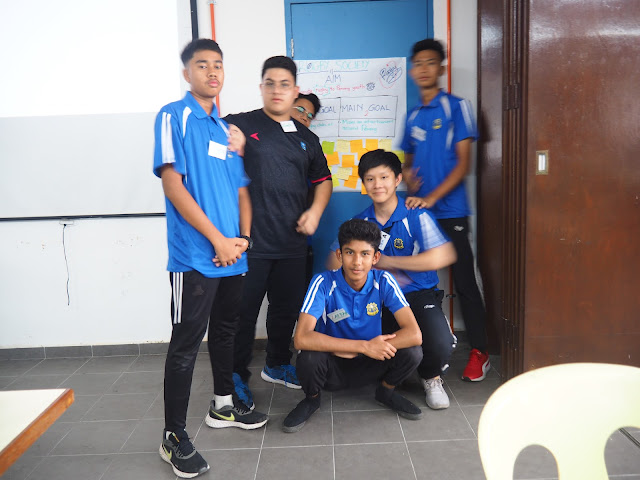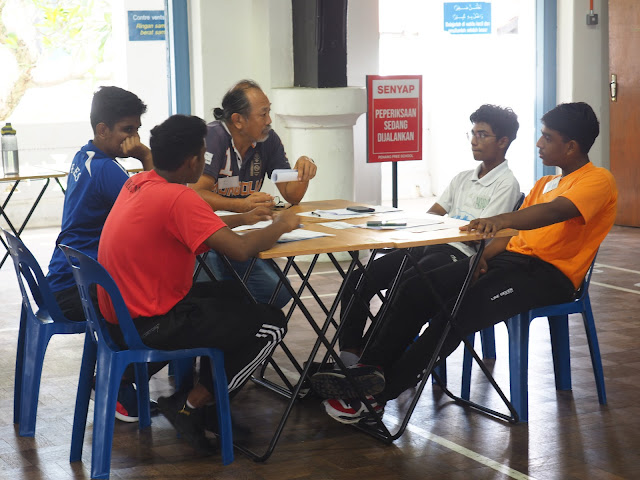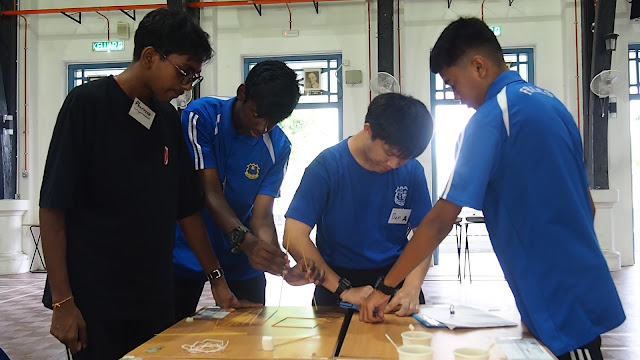Using the Kutub Khanah Tunku as the venue for the first day of our eighth student leadership workshop last Sunday brought back some memories of 1969. Not the bad memories of the racial violence in May that year but the good memories of December. The Kutub Khanah Tunku was opened by the first Prime Minister, Tunku Abdul Rahman, on 29 December 1969. As Prime Minister, he had requested the Federal Government to approve a $100,000 grant towards its construction.
I had written this about the Kutub Khanah Tunku in my book, Let the Aisles Proclaim some seven years ago:
At the School’s Speech Day on 21st October 1967, the Minister of Education, Mohamed Khir Johari, announced that the Prime Minister, Tunku Abdul Rahman, would approve a grant of $100,000 from the Central Government towards the Library Fund. (1) Subsequently, the Tunku visited the School on 17th November to choose a suitable site for the library. Showing great personal interest in the project, he requested the State Engineer to submit a few sketches to him for consideration. (2) On 5th February 1968, the Prime Minister made a second visit to the School whereupon he handed over a cheque of $100,000 to the Chairman of the Board of Governors (3) and in March, the sketch plans were forwarded to the Tunku for his approval. (4) The plan for the new Library would include two conference rooms and two reading rooms, both air-conditioned. (5) As the cost of construction was estimated at about $160,000 by the Jabatan Kerja Raya while the balance in the Development Fund was about $148,000, the School formed a Library Committee to look into raising an additional $40,000 to meet the shortfall and other anticipated expenditure.
References:
(1) The Straits Times, 22nd October 1967
(2) Minutes of Board of Governors Meeting on 17th November 1967
(3) (October 1968). Penang Free School Magazine (Vol. 5 No. 2)
(4) Minutes of Board of Governors Meeting on 15th March 1968
(5) Minutes of Board of Governors Meeting on 27th September 1968
I remember going to the Library on the 28th, the eve of its official opening, when word got around that the Tunku would visit the place for a preview. True enough, he did turn up at about noon on the 28th of December and we, the schoolboys, milled around him. If there were bodyguards, they didn't make their presence felt or seen. We could approach Tunku from anywhere and asked him questions. He spoke to us about his time at Penang Free School, then located in Farquhar Street, from 1916 till 1919. He gave us some well-meaning advice on our studies and our future. Several days later, I started my Form Five.
Kutub Khanah is a very formal, scholarly Malay term to mean Library. Sometime in the 1990s or 2000s, some wisecrack decided to rename the building as Perpustakaan Tunku, which didn't go down well with many Old Boys. Tampering with the name amounted to tampering with a school value. When 2016 rolled in, the Bicentenary celebrations committee took the opportunity to rename the Library back to its original form, Kutub Khanah Tunku.
Here are a few pictures of the Library's official opening by Tunku Abdul Rahman on 29 December 1969. Also present at the ceremony was Dr Lim Chong Eu, an Old Free who became Penang's second Chief Minister a few months earlier.
 |
| How the Kutub Khanah Tunku looked like in 1969. When it opened, it meant the end of the junior library that was located above the porch of the main building. There was also the Pinhorn Memorial Library in the Sixth Form Block. Both closed with the opening of the new Library. |
The School Librarian for many years was Ms Tan Joo Sin who taught me Geography. She was the sister of my Form One Supervisor in 1966, Capt Tan Boon Soon, both of them not related to the then Headmaster, Tan Boon Lin. Even after I had left the Free School at the end of 1972, I returned to the Kutub Khanah Tunku very often while awaiting my examination results. I had felt that the collection of books here were on par with the Penang Library. Moreover with a School Librarian that knew me very well, I could spend my hours reading as many books that I wanted. More than that, there were foreign magazines like Spectator and New Statesman from the United Kingdom which afforded me a supplementary viewpoint of world affairs.




In due course, Penang Free School mounted a wall plaque in the Library to acknowledge the individuals and companies that had contributed at least $100 to the Library Building Fund. Of course, the name that topped the list of donors was Tunku Abdul Rahman - pride of place was accorded to him for bringing in the $100,000 - but in reflection, the grant had come not from the Tunku personally but the Federal Government of the day.
Anyway, on the plaque had also appeared the names of Lim Kar Bee ($1,000); Heah Hock Meng and Loh Boon Siew ($500); Chan Siew Teong ($300); Loo Shaik Sang ($250); Dr Ong Huck Chye ($200); Chin Kim Goon, Tan Kiar-Lew and Tan Seng Jin ($150); Koay Teik Swee, Dr Yeoh Cheang Hoe and Dr Yeoh Oon Seang ($120); Tan Phock Kin ($110); C Ponniah ($105); Cheah Jin Teong ($101); Eusoffee Abdoolcader, Dr Husein Abdoolcader, Abdul Aziz bin Muhsin, Dr Haji Abdul Ghani bin Mohamed, Dr Abdul Wahab, MSR Ambrose, Ayob bin Sa'ud, Cheah Eng Guan, Chee Teen Lum, Dr Cheong Mow Lum, David Choong, Dr T Devaraj, Eu Cheow Hin, Haji Fathil Basheer, Geh Chong Keat, Goon Fatt Chee, Haji GM Yusoff, Haji Mustakim bin Haji Abbas, Iskandar Mohd Ismail, Haji CC Ismail, Koh Sin Ghee, Koh Sin Hock, Lee Chye Chow, Lim Boon Hor, Haji Md Ismail KS, Mohd Ismail bin Che Matt, Mohamed Khir Johari, Capt Md Noor bin Mohamed, Dr Oh Kim Seng, Ong Teong Guan, Saw Choo Theng, Saw Hun Eng, Tai Liang Kheng, Tan Ah Ee, Justice Tan Ah Tah, Tan Boon Lin, Tan Khim Hoe, Tan Teik Beng, Teoh Peng Hooi, Tye Cho Chun, Yeoh Oon Huat, Yeoh Tat Thong and Wong Kum Peng ($100); Eastern Smelting Sdn Bhd ($1,000); Dunlop Malaysian Industries Bhd ($250); and Guinness Malaysia Bhd ($200); Guthrie & Co (FE) Bhd, Penang Malay Association, PFS National Language Society and Van Leers Containers (M) Sdn Bhd ($100). That's $10,026 collected from them.


.jpg)
.jpg)













































